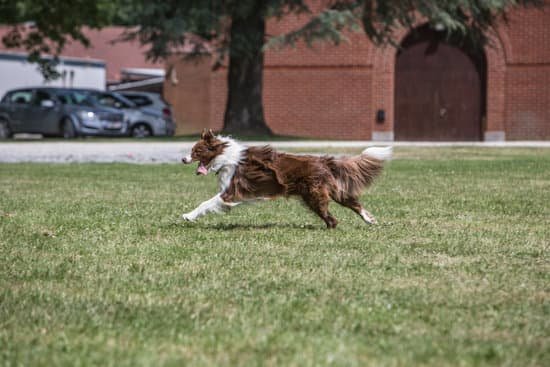German Shepherds are known for their intelligence, loyalty, and protective instincts. These qualities make them excellent candidates for protection training. In this article, we will explore how to train a German Shepherd dog to attack, ensuring the safety and effectiveness of both the canine and its owner.
Before diving into the specifics of attack training, it is important to understand the unique characteristics of the German Shepherd breed. Known for their versatility and adaptability, these dogs excel in various roles, including police work, search and rescue missions, and personal protection. Their keen sense of smell and strong prey drive make them ideal candidates for training in defense and attack.
When choosing a German Shepherd for protection training, it is crucial to select a dog with a stable temperament and sound health. Establishing a strong bond with your canine companion is paramount in successful training. This bond is built on trust, respect, and clear communication between you and your German Shepherd – laying down the foundation for effective obedience and protection training procedures.
Choosing the Right German Shepherd for Protection Training
German Shepherds are renowned for their intelligence, loyalty, and courage, making them an ideal choice for protection training. However, not all German Shepherds are suitable candidates for attack training. When selecting a German Shepherd for protection training, it is crucial to consider various factors to ensure that you choose the right dog for the job.
Temperament and Drive
One of the most critical factors to consider when choosing a German Shepherd for protection training is their temperament and drive. Dogs with a strong prey drive and high energy levels are typically better suited for attack training. These dogs will be more responsive to commands and show greater enthusiasm for the work involved in protection training. It is essential to assess the dog’s natural instincts and behavior before embarking on attack training.
Health and Physical Capabilities
Another important consideration when selecting a German Shepherd for protection training is their health and physical capabilities. A dog that is in good health, free from any genetic disorders or physical limitations, will be better equipped to handle the rigorous demands of attack training. Regular exercise, proper nutrition, and veterinary check-ups are essential to ensure that your German Shepherd is physically prepared for protection training.
Professional Evaluation
Before beginning attack training with your German Shepherd, it is advisable to seek professional evaluation from experienced trainers or behaviorists. They can assess your dog’s suitability for protection work based on their temperament, drives, and overall behavior.
Professional guidance will help you make informed decisions about whether your German Shepherd is a suitable candidate for attack training and what steps you need to take to prepare them effectively. By taking these steps, you can ensure that you choose the right German Shepherd for protection training, setting them up for success in their role as a trained attack dog.
Building a Strong Bond and Establishing Trust With Your German Shepherd
German Shepherds are known for their loyalty and strong bond with their owners. Building a solid relationship with your German Shepherd is crucial, especially when training them to perform protective tasks like attacking on command. Here are some tips on how to strengthen that bond and establish trust with your furry companion:
- Consistent Training Routine: Establish a consistent training routine with your German Shepherd to create a sense of predictability and structure in their daily lives. This will help build trust as they learn what is expected of them.
- Positive Reinforcement: Use positive reinforcement techniques such as treats, praise, and playtime to reward good behavior. This creates a positive association with training and strengthens the bond between you and your German Shepherd.
- Quality Time Together: Spend quality time with your German Shepherd outside of training sessions. Engage in activities they enjoy, such as walks, runs, or playtime in the yard. This will help deepen your connection and trust with one another.
Training a German Shepherd to attack on command requires not only obedience skills but also a solid foundation of trust between you and your dog. By following these tips and investing time in building a strong bond, you can set the stage for successful protection training down the line.
Remember that every dog is unique, so take the time to understand your German Shepherd’s individual personality and needs. With patience, consistency, and dedication, you can effectively train your German Shepherd to be a reliable protector while maintaining a loving and trusting relationship with them throughout the process.
Basic Obedience Training for a German Shepherd
German Shepherds are known for their intelligence, loyalty, and protective nature. Before diving into training a German Shepherd to attack, it is crucial to ensure that they have a strong foundation in basic obedience training. This not only sets the groundwork for more advanced training but also establishes clear communication between you and your dog. Here are some essential basic obedience training tips for your German Shepherd:
- Start with simple commands such as sit, stay, come, and heel. Consistency is key in reinforcing these commands.
- Use positive reinforcement techniques like treats, praise, and play to motivate your German Shepherd during training sessions.
- Practice short training sessions multiple times a day to keep your dog engaged and interested.
Training your German Shepherd in basic obedience will lay the groundwork for more advanced protection training, including teaching them how to properly respond to attack commands. To train a German Shepherd dog to attack on command effectively, you must have a solid foundation in place with basic obedience skills.
Teaching Attack Commands
Once your German Shepherd has mastered basic obedience commands, you can begin introducing them to the concept of protection training. This includes teaching them specific attack commands that will signal when they should act aggressively towards a potential threat. Here are steps on how to train a German Shepherd dog to attack on command:
- Start by working with a professional trainer who specializes in protection training to guide you through the process safely.
- Introduce your dog to bite sleeves or other appropriate equipment that will simulate a real-life scenario where they need to protect you.
- Associate a specific command with the act of attacking, such as “Get him” or “Attack.” Consistency is key in reinforcing this command during practice drills.
By following these steps and consistently practicing with your German Shepherd under professional guidance, you can safely and effectively train them to respond to attack commands when necessary. Remember that responsible ownership practices and ongoing maintenance training are essential components of owning a German Shepherd trained to attack.
Introduction to Protection Training and the Importance of Professional Guidance
German Shepherds are known for their intelligence, loyalty, and versatility, making them excellent candidates for protection training. However, it is crucial to understand the breed and its characteristics before diving into training them to attack. This breed is highly trainable and eager to please their owners, which can be advantageous when teaching them protective behaviors.
When considering how to train a German Shepherd dog to attack, it is essential to choose the right candidate for protection training. Not all German Shepherds have the temperament or drive necessary for this type of work. Look for traits such as confidence, alertness, and a strong desire to work in potential candidates. A good candidate will be able to discern between real threats and everyday situations, making them more reliable in high-stress situations.
Building a strong bond with your German Shepherd is the foundation for successful protection training. Establishing trust and respect between you and your dog is crucial for developing effective communication during training sessions.
Positive reinforcement techniques, consistent training methods, and regular exercise will help strengthen your bond with your German Shepherd and create a solid base for further protection training. Professional guidance from experienced trainers can also provide valuable insight into the most effective ways to train your German Shepherd to attack while maintaining a healthy relationship with them.
| German Shepherd Traits | Protection Training Traits |
|---|---|
| Intelligent | Confidence |
| Loyal | Alertness |
| Versatile | Desire to Work |
Teaching Your German Shepherd Basic Attack Commands
German Shepherds are known for their intelligence, loyalty, and protective instincts, making them excellent candidates for protection training. Before diving into teaching your German Shepherd how to attack, it is crucial to establish a strong bond and trust with your canine companion. Building a solid foundation of obedience and communication is essential in ensuring a successful training process. This involves consistent positive reinforcement, clear boundaries, and effective leadership.
Once you have established a trusting relationship with your German Shepherd, it is important to introduce basic attack commands. These commands will serve as the foundation for more advanced protection training later on. Some common attack commands include “attack,” “bite,” and “release.” It is crucial to use these commands consistently and with confidence to ensure your dog understands what is expected of them.
When teaching your German Shepherd basic attack commands, it is important to seek professional guidance to ensure proper technique and safety during the training process. Working with an experienced trainer can help you navigate potential challenges that may arise while teaching your dog how to attack. Additionally, professional trainers can provide valuable insight into how to progress from basic commands to more complex scenarios effectively. Remember, safety should always be a top priority when training your German Shepherd to attack.
Practice Drills and Simulations for Real-Life Scenarios
German Shepherds are known for their intelligence, loyalty, and trainability, making them a popular choice for protection and guard dog training. When it comes to training a German Shepherd to attack on command, it is crucial to follow a structured approach that focuses on building the necessary skills while ensuring safety for both the dog and its handler.
One of the key aspects of training a German Shepherd to attack is practicing drills and simulations that mimic real-life scenarios. This not only helps your dog master the necessary skills but also prepares them to act decisively in case of a threat.
These drills can include scenarios such as an intruder entering your home or someone threatening you in public. By consistently practicing these drills, you can ensure that your dog is prepared to respond effectively in high-stress situations.
To start incorporating practice drills into your training routine, begin by setting up controlled scenarios that gradually increase in difficulty. Start with simple obedience commands followed by basic attack commands in a safe and controlled environment.
As your German Shepherd becomes more confident and proficient, you can progress to more challenging scenarios that require quick thinking and decisive action. Regular practice with varying scenarios will help reinforce your dog’s training and improve their ability to respond appropriately when faced with real-life threats.
Another important aspect of conducting practice drills and simulations is ensuring the safety of everyone involved. It is essential to use proper equipment such as protective gear for yourself and any decoys used in the training exercises. Additionally, always supervise the training sessions closely and be prepared to intervene if necessary. By prioritizing safety during these exercises, you can create a positive learning environment for your German Shepherd while minimizing the risk of accidents or injuries.
| Training Scenario | Description |
|---|---|
| Intruder at Home | Train your German Shepherd to respond aggressively when faced with an intruder entering your home. |
| Public Threat | Practice having your dog react defensively when someone exhibits threatening behavior towards you in public settings. |
Ensuring Proper Socialization and Safety Measures for Your Trained Attack Dog
Socializing Your Trained Attack Dog
Socialization is a crucial aspect of training a German Shepherd to attack. It is essential to expose your dog to various environments, people, and other animals from an early age. This exposure helps your dog become more comfortable and confident in different situations, reducing the chances of aggression towards unfamiliar people or animals. Organized socialization classes, visits to dog-friendly places, and interactions with different individuals can greatly benefit your trained attack dog.
Implementing Safety Measures
When training a German Shepherd to attack, safety should be a top priority. It is important to ensure that your dog is always under control during training sessions and real-life scenarios. Use a secure leash and muzzle when necessary to prevent any accidents or injuries. Additionally, consider using protective gear like bite sleeves or decoys for practicing attack commands safely. Supervise all interactions with strangers carefully to avoid any unexpected aggressive behavior from your trained attack dog.
Creating Boundaries
Establishing clear boundaries for your trained attack dog is essential for their well-being and safety. Teach your German Shepherd when it is appropriate to exhibit aggressive behavior and when it is not. Consistent reinforcement of these boundaries through positive reinforcement techniques can help prevent any unwanted aggression in non-threatening situations. Training your dog to differentiate between potential threats and normal everyday encounters ensures that they only act on command when necessary.
Maintenance and Ongoing Training for a Highly Skilled Attack Dog
German Shepherds are known for their intelligence, loyalty, and trainability, making them a popular choice for protection and security work. However, owning a highly skilled attack dog comes with a great deal of responsibility. Once your German Shepherd has been trained to attack, it is crucial to maintain their skills through ongoing training and practice. This ensures that they remain sharp, focused, and able to respond effectively in any situation.
Regular training sessions should be part of your routine to keep your German Shepherd well-versed in their attack commands and behaviors. Consistency is key when it comes to maintaining their training. This includes practicing obedience commands, attack drills, as well as introducing new scenarios to keep them challenged. By reinforcing these skills regularly, you can help your German Shepherd stay prepared for any potential threats.
In addition to regular training sessions, it is important to incorporate physical exercise into your German Shepherd’s routine to keep them healthy and agile. A well-exercised dog is more likely to perform at their best during training sessions or real-life situations where they may need to act defensively.
Engaging in activities such as agility courses or long walks can help keep your dog physically fit and mentally stimulated, which can enhance their overall performance as an attack dog.Participating in advanced training classes or workshops can also be beneficial for both you and your German Shepherd.
These classes offer opportunities to refine their skills under the supervision of experienced trainers who can provide valuable feedback on areas that may need improvement.The investment of time and effort into the maintenance and ongoing training of your highly skilled attack dog will not only ensure their effectiveness but also strengthen the bond between you as their handler.
By prioritizing consistent training, exercise, and continued education opportunities, you can help your German Shepherd reach their full potential as a loyal protector and guardian.
Conclusion
In conclusion, training a German Shepherd to attack requires dedication, patience, and a deep understanding of the breed’s characteristics. It is essential to choose the right dog for protection training, taking into consideration their temperament and willingness to learn. Building a strong bond based on trust and respect is fundamental in establishing a successful working relationship with your German Shepherd.
Basic obedience training lays the foundation for more advanced protection training, including teaching your dog basic attack commands. However, it is crucial to seek professional guidance when introducing protection training to ensure both the safety of the handler and the effectiveness of the training program. Practice drills and simulations help prepare your German Shepherd for real-life scenarios where their protective instincts will be put to use.
Furthermore, responsible ownership goes hand in hand with training practices for a German Shepherd trained to attack. Proper socialization, safety measures, ongoing maintenance, and continuous training are essential in maintaining a well-rounded attack dog. By following these guidelines and committing to providing proper care and guidance, you can ensure that your trained German Shepherd will fulfill its role effectively while remaining a loyal and loving companion.
Frequently Asked Questions
Can I Train My German Shepherd to Attack?
Training a German Shepherd to attack is a controversial topic. It is essential to remember that German Shepherds are inherently protective and trainable dogs. However, training them to be aggressive towards people should not be encouraged.
What Is the Command for a German Shepherd to Attack?
The command for a German Shepherd to attack is typically “Bite” or “Attack.” It is crucial to recognize that this command should only be used in specific situations such as self-defense or protection, and it requires proper training and control.
How Do You Discipline a German Shepherd?
Discipline for a German Shepherd should focus on positive reinforcement rather than punishment. Consistent training, socialization, exercise, and mental stimulation are vital for maintaining their well-being. Correct undesirable behavior with firm but gentle methods such as redirection and consistency.

Welcome to the blog! I am a professional dog trainer and have been working with dogs for many years. In this blog, I will be discussing various topics related to dog training, including tips, tricks, and advice. I hope you find this information helpful and informative. Thanks for reading!





